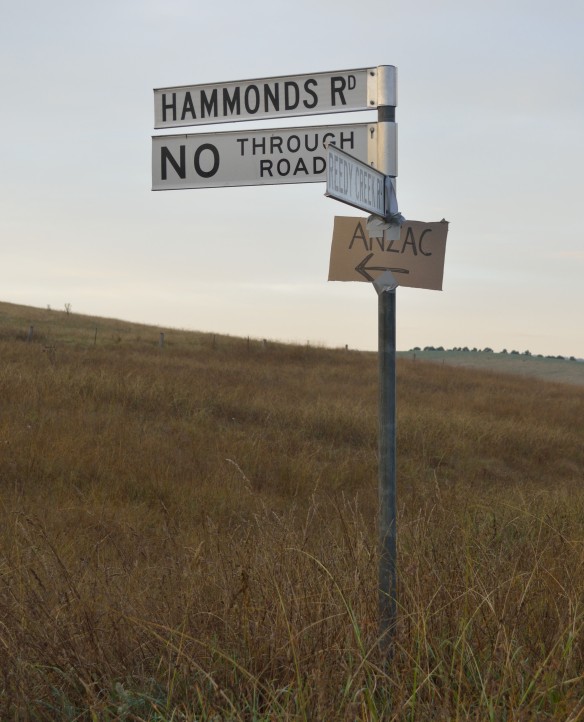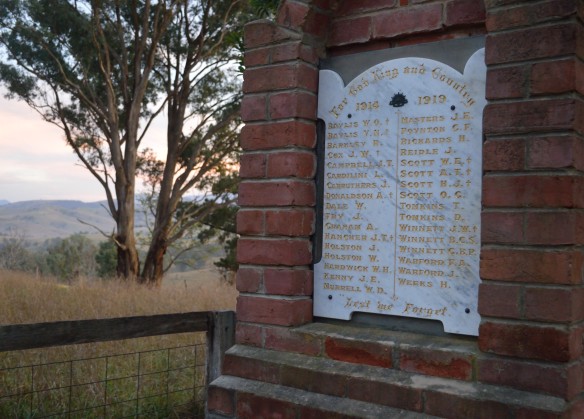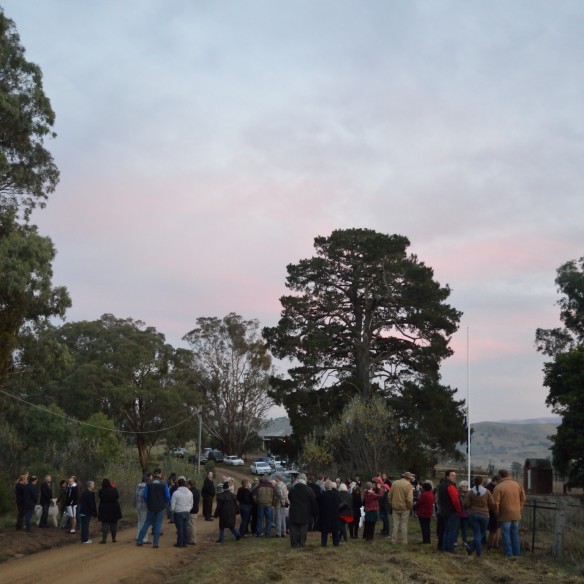“It’s a bit out of the way; do you need directions?”, the local RSL sub-branch president asks. It’s the night before Anzac Day and we’re ringing to confirm arrangements for the dawn service. New to this part of Gippsland, five hours east of Melbourne, we gladly take the directions, and a good thing, too. They require a left-hand turn at the pub, veering right at a fork, turning left onto a No Through Road… Our destination in the early hours of 25 April 2015 is the Reedy Flat war memorial, which bears the names of 33 townsmen who served during the First World War. The town is gone, but the names remain.
Some descendants remain as well. In a fitting speech, Carey Mudge sketches the stories of six of his relatives listed on the memorial. Three died and three returned. Mudge thanks the members of the nearest RSL sub-branch, Ensay-Swifts Creek, for their efforts to retore the memorial and hold the first service in living memory here: these men, too, are remembered today. Early media reports this Anzac Day suggest record attendances at the central capital city services, especially at Martin Place in Sydney, the Australian War Memorial in Canberra and the Shrine of Remembrance in Melbourne. But how many other war memorials, I wonder, stand alone?
Russell Adams, the Ensay-Swifts Creek RSL Sub-Branch President, says at the end of the service that he’s ‘overwhelmed’ by the turnout. The sub-branch has only about 20 financial members, and they’d expected fewer than a third of the dawn service attendees at the end of this No Through Road. Later, as indefatigable country women cook sausages, bacon and eggs in frying pans at the Ensay war memorial hall, he worries he’s frightened people off by cautioning that the breakfast may be under-catered. “It’s alright,” he’s reassured. “Everyone’s probably just having a chat out there.”
Chatting they are: about the great-uncles and grandfathers and great-grandfathers listed on the memorial; about school; about the weather. A community that has offered its quiet contemplation, and now goes about its day.
The title of this post is drawn from CEW Bean’s words about the Australian War Memorial: “Here is their spirit, in the heart of the land they loved; and here we guard the record which they themselves made.”




